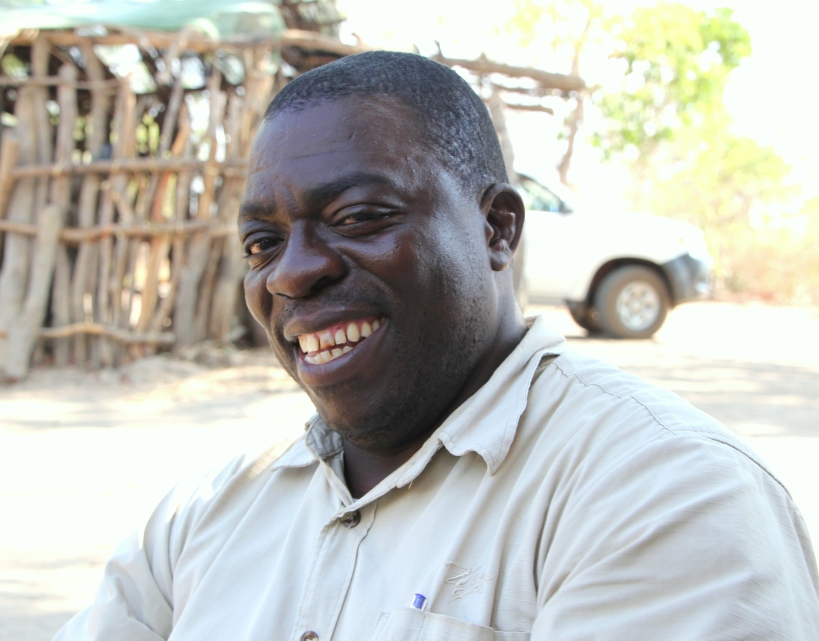 Leonard Manda is a big man with a big heart and big ideas.
Leonard Manda is a big man with a big heart and big ideas.
 He’d better be. As Heifer Malawi’s program director of the Enhanced Community Resilience Programme, Leonard is responsible for helping 1,600 families in 45 villages around Kasungu National Park cope with climate change and the increased occurrence of drought. These conditions cause folks to go into the nearby national park to poach for meat and cut down trees for firewood, so every day Leonard hops on his motorcycle and goes out to teach people in these far-flung villages to make better choices.
He’d better be. As Heifer Malawi’s program director of the Enhanced Community Resilience Programme, Leonard is responsible for helping 1,600 families in 45 villages around Kasungu National Park cope with climate change and the increased occurrence of drought. These conditions cause folks to go into the nearby national park to poach for meat and cut down trees for firewood, so every day Leonard hops on his motorcycle and goes out to teach people in these far-flung villages to make better choices.

Rennie Katundu and the 20-liter water bucket they call “friend”– because it takes one to lift it down from your head.

Quality control tools.

Simple energy stove.
And boy, is he creative! I learned so much from Leonard, I couldn’t write down notes fast enough. He’s taught women like Rennie Katundu in Mzumbatu Village to make energy stoves, using clay from anthills that is pure and uncrackable. First, the women cure the clay by burying it in a pit for 2 weeks. Then they smear ash inside a bucket mold to prevent sticking and spread the clay inside the mold with their heels. They use “quality control tools” Leonard fashioned from sticks to precisely measure the width and depth of the clay, then place the molds inside to dry overnight, release them in the morning, finish with the handles and pot rests… and voila! A time-and timber-saving treasure!
Leonard also teaches the women to make super-smart fireless cookers (think of it as a wireless crockpot) so they can cook rice and protein-rich beans in a fraction of the time. This cooker is so clever it delighted me to no end…
Instead of wasting 4 hours and bundles of firewood to cook beans, women can boil them in water for 40 minutes in the morning, pop the pot into an old basket lined with banana leaves, cover it with an insulated top, and four hours later (lunchtime!) the beans will be piping hot and ready to eat.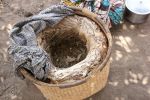 Everything to create this fireless cooker is readily available to the women – old baskets, banana leaves, old cloths – and it can make the difference between a family eating a diet of all carbs and enjoying protein-rich meals. (And rice “cooks” in 40 minutes after just two minutes of boiling!)
Everything to create this fireless cooker is readily available to the women – old baskets, banana leaves, old cloths – and it can make the difference between a family eating a diet of all carbs and enjoying protein-rich meals. (And rice “cooks” in 40 minutes after just two minutes of boiling!)
But Leonard’s bag of tricks goes far beyond the kitchen. He’s also teaching people to use the local public dambos (wetlands) to grow community gardens all year round – and to make vegetable “sack gardens” using plastic bags of soil, manure, river sand and permeable stones to hang in the house for immediate use.
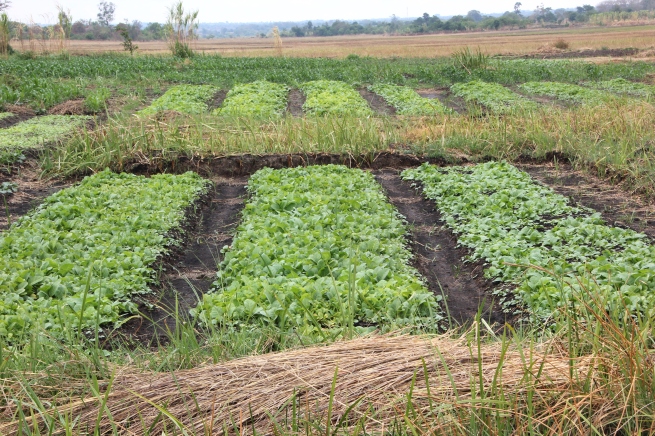
A dambo filled with winter lettuce
To combat deforestation in Malawi’s densely populated land, Leonard is helping to create tree nurseries in villages like Mzumbatu, where the women are growing thousands of seedlings in an empty plot. 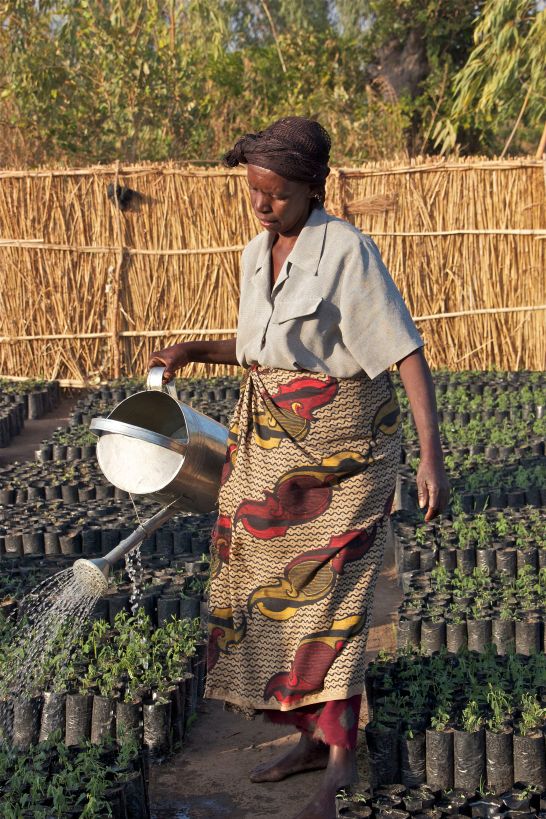
Heifer and its partners provide the seeds, soil, and training – but the women do the work of planting each plastic sleeve of soil, and watering the tiny acacia, senna semia and other indigenous trees that will soon provide firewood and poles for the community.
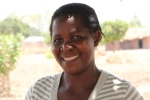 The indomitable Ruth Deo showed us what the resulting Community Wood Lot will look like. With Leonard’s guidance, her village grew the trees from seeds for months, then 20 villagers spent 5 days planting the 5,500 tiny trees on a hectare of land the village headman had donated. In 5 years, these trees will be grown and each of the village’s 88 families will be allowed to take 4-10 trees every year from the lot (depending on need). And since seedlings will be replanted every year, the village will ensure its supply of sustainably-grown wood for the future – right in its own back yard.
The indomitable Ruth Deo showed us what the resulting Community Wood Lot will look like. With Leonard’s guidance, her village grew the trees from seeds for months, then 20 villagers spent 5 days planting the 5,500 tiny trees on a hectare of land the village headman had donated. In 5 years, these trees will be grown and each of the village’s 88 families will be allowed to take 4-10 trees every year from the lot (depending on need). And since seedlings will be replanted every year, the village will ensure its supply of sustainably-grown wood for the future – right in its own back yard.

Big trees… soon to come!
Leonard’s also a big fan of conservation agriculture – and he took us to Joseph & Bibiana Phiri’s farm to show us how minimum tillage, crop rotation, and crop residue management can replenish exhausted soils and increase production.

Bibiana is a force of nature in her own right, and was eager to show off her fields covered in corn husk residue that cuts down on parasitic witch weed, improves sandy soil, and decomposes in the rainy season to form compost. She’s kept the trees in her fields, adds manure on top of the crop residue, and is now using 1/2 the expensive fertilizer her maize used to require. Bibiana’s goats – 2 of the 1,268 Leonard has placed in Heifer’s 45 villages – are thriving and she and her husband are big fans of the useful trainings they’ve received.
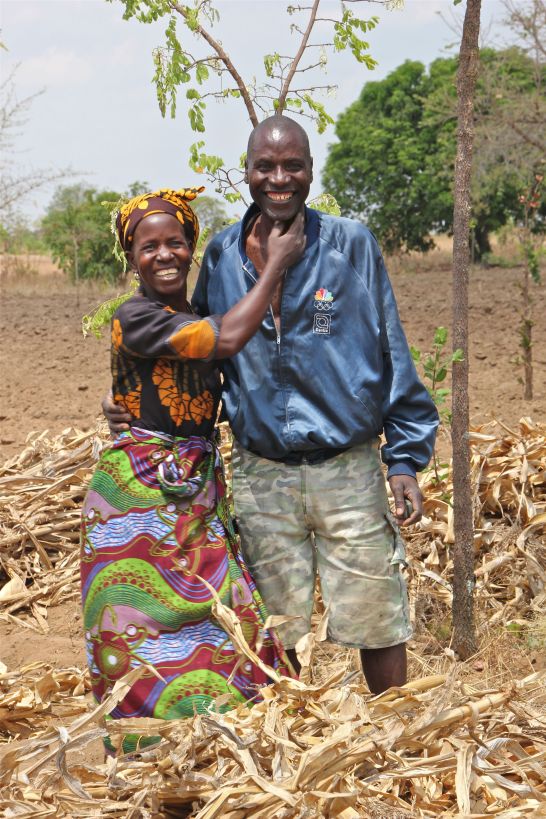
The Phiris… knee-deep in conservation agriculture!
Now it’s not like Leonard is doing every bit of this work himself. The ECRP is a $15 million, 5-year, 61,000-family endeavor funded by the Department for International Development, Irish Aid & Norway, and implemented by a consortium of aid organizations, with Heifer as the leader in livestock. In that role, Leonard is a trainer of trainers, working with multiple ministries of the government to make sure these programs endure after Heifer’s role has ended – but his leadership, passion and just plain sweat equity were a marvel to behold.
In our final hour together, Leonard showed me the cool Energy Kit Heifer has put together to offer at a discount to smallholder farmers. The kit consists of a solar panel, solar light, rechargeable battery, and transistor radio for crop information and news (illiterate people can still listen), …. all at a 30% discount. 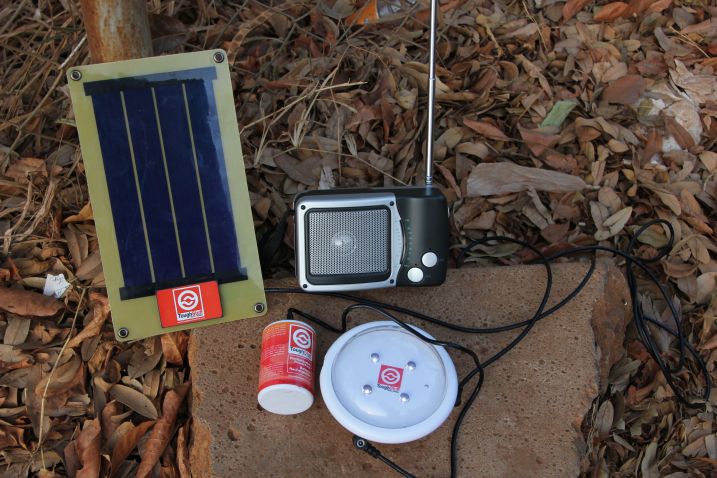
I thought that was a perfectly fitting metaphor for Leonard–an indefatigable source of sound and light for Malawi!
~~~~~~~~~~~~~~~~~~~~
 And for all you technophiles (and Mac-ademics) … check out what MASHABLE had to say about the new Heifer catalog app… the FIRST non-profit magazine tablet app ever. Click here to download it on your iPad or Android tablet & you’re good to give! Whoeeee!
And for all you technophiles (and Mac-ademics) … check out what MASHABLE had to say about the new Heifer catalog app… the FIRST non-profit magazine tablet app ever. Click here to download it on your iPad or Android tablet & you’re good to give! Whoeeee!














































































